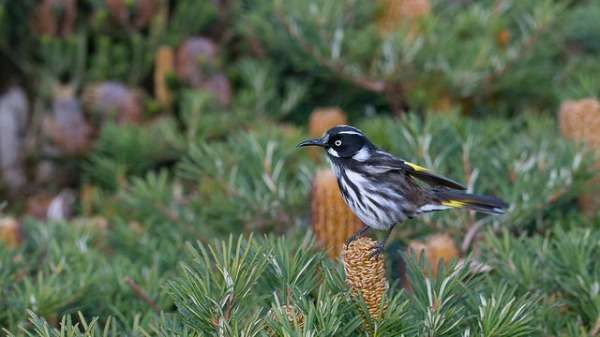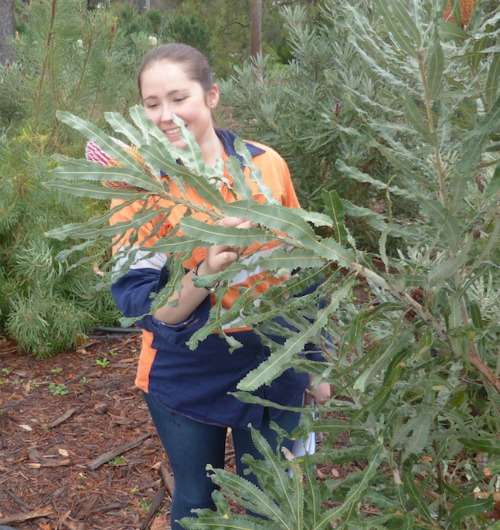Pollen-carrying birds need safeguard against Perth's sprawl

Western Australia's urban sprawl may be closing in on the future of the state's fragile native plant and bird population, according to a recent study.
WA's human population is expected to rapidly rise from about 2 million to more than 3.5 million by 2050, with the expansion of Perth and adjoining Peel region threatening more than 46 bird species and many plant species.
Curtin University researcher Dr Alison Ritchie spoke about her PhD research project (at UWA) measuring the impact of human habitation on Perth metropolitan region's Banksia woodlands as part of the Fresh Science competition held at the Brisbane Hotel earlier this month.
She did this by studying the movement of pollen to determine urban threat to plant and birdlife.
As part of her four-year project Dr Ritchie spent a staggering total of six months staring at native woodland trees measuring the travel distance of pollen between sites.
She says that many plant and bird species that were here at the time of settlement have already disappeared and we need to restore WA's native woodlands to ensure a diversity of pollen carrying birds will return to many depleted sites.
Plant diversity can affect how birds forage and what types of birds enter the sites, so the greater diversity of plants that are restored in an area means the greater diversity of bird species that will return to a site, Dr Ritchie says.

"When a site is re-vegetated with a limited number of plant species that abundantly flower, larger bodied birds become territorial and aggressive, pushing out smaller bird species before they forage, which causes decreased in pollen dispersal" she says.
"And the greatest plant diversity within a fragment, the greater the bird diversity, so the quality of vegetation is linked to the number of bird species found on a site," she says.
UWA School of Plant Biology researcher Dr Carole Elliott says Dr Ritchie's work is the first half of a whole by helping to develop a holistic approach of what will benefit a degraded ecosystem.
Dr Elliott has been working on the role of megafauna (emus) in dispersing the seed of plants with large seeds (Macrozamia and Podocarpus) long distances in the landscape at Murdoch University.
"By further understanding...how pollen is moved by birds [it] assists my work, with valuable insight on what diversity of plant species will best compliment ecosystems that [are] already there," Dr Elliott says.
Provided by Science Network WA
This article first appeared on a science news website based at Scitech.


















